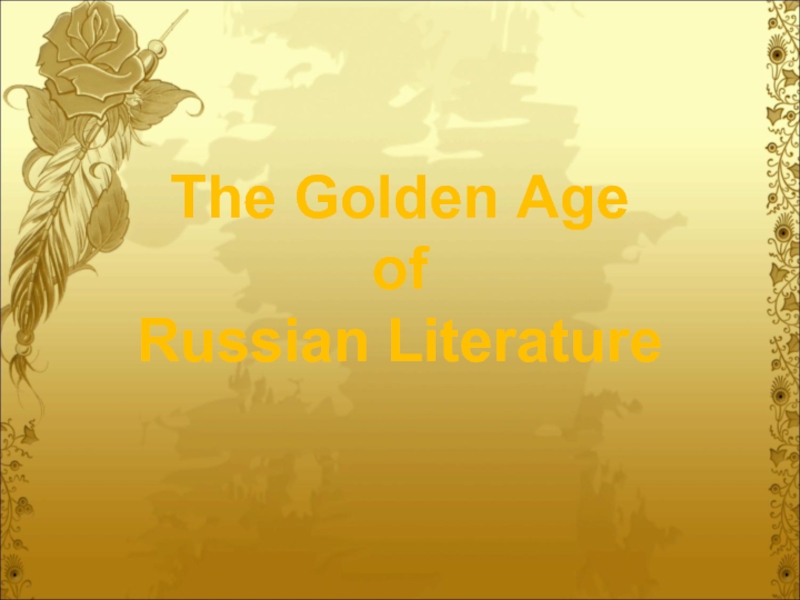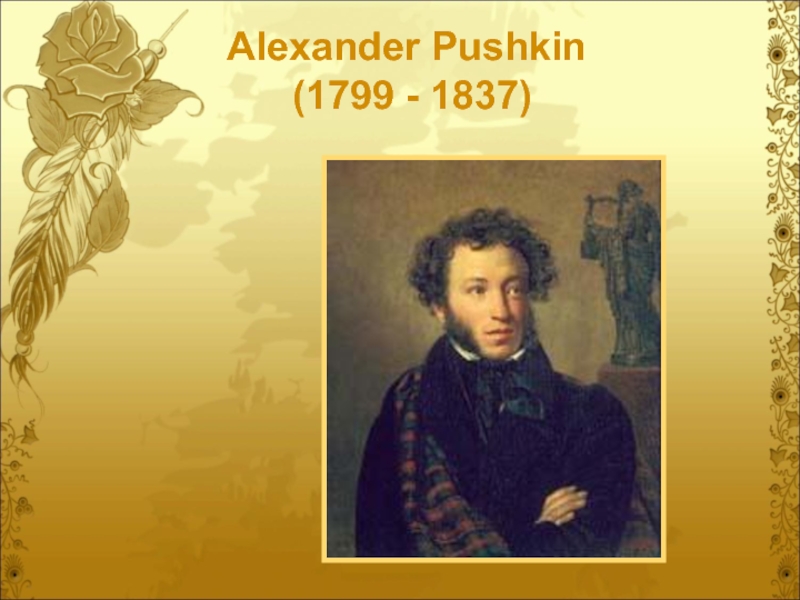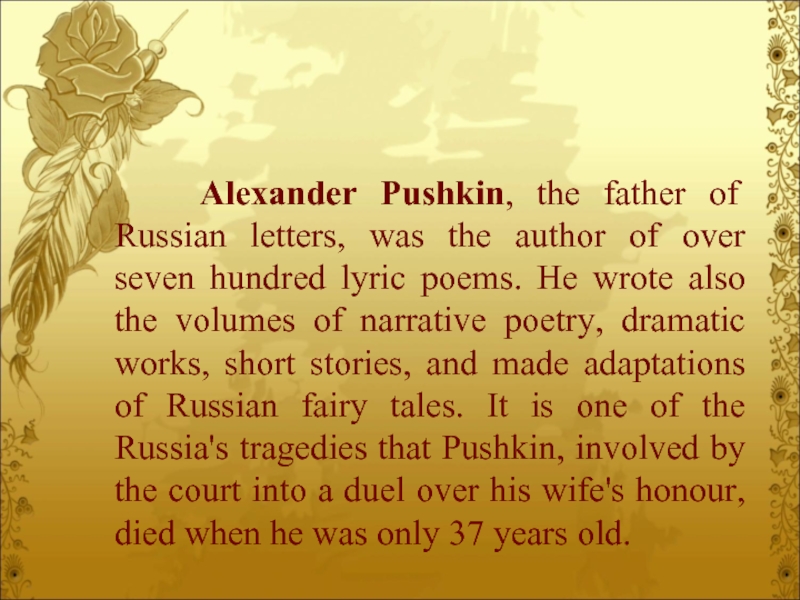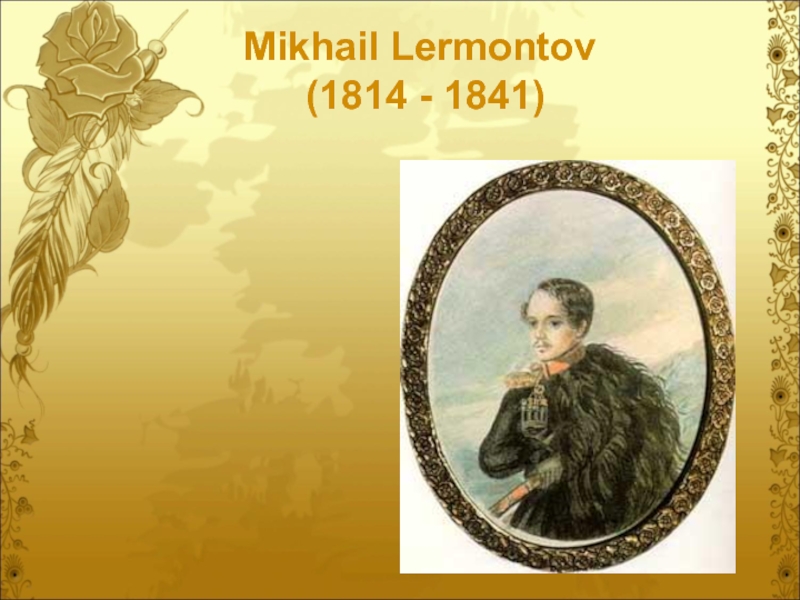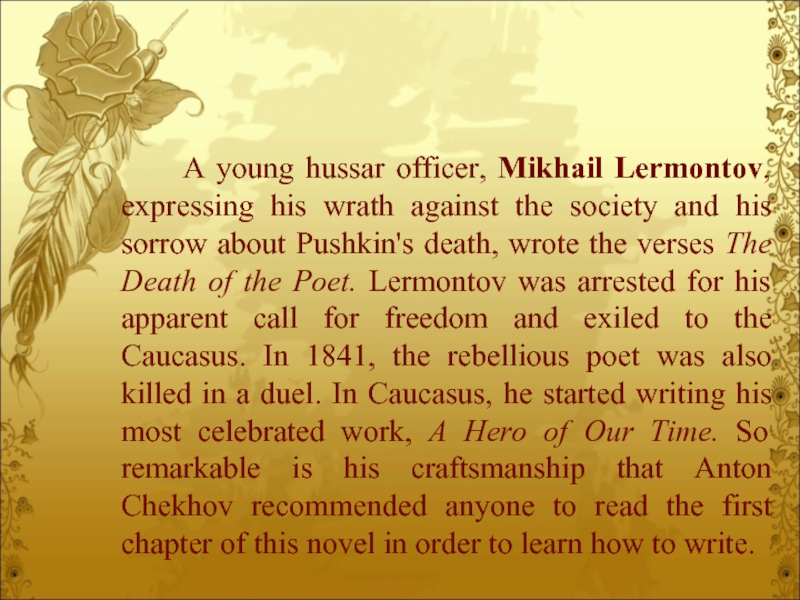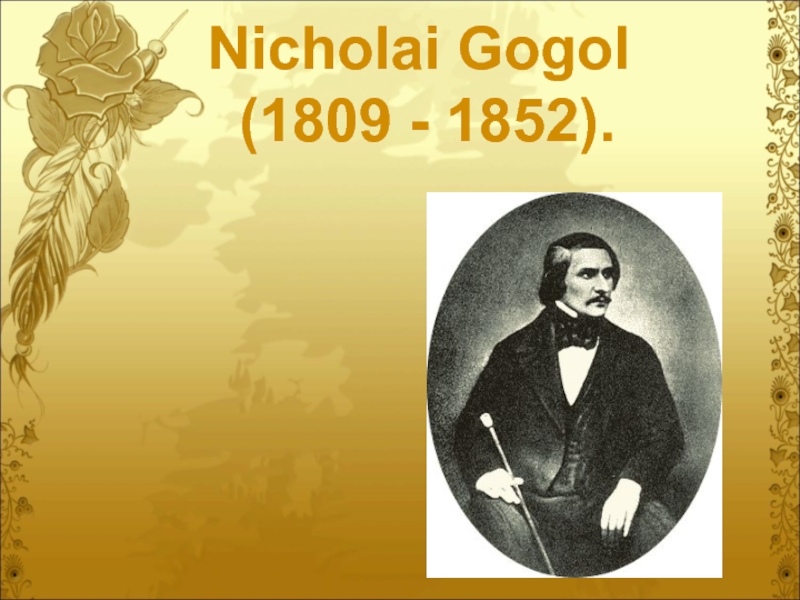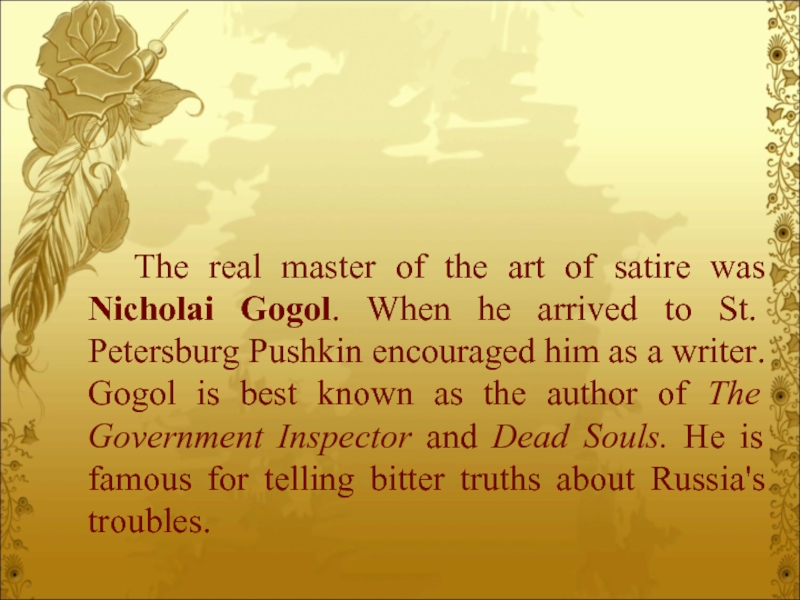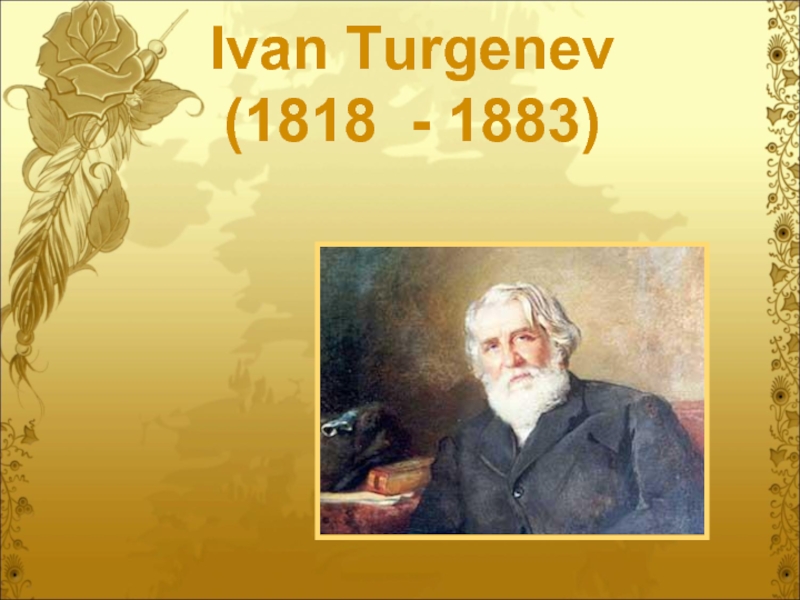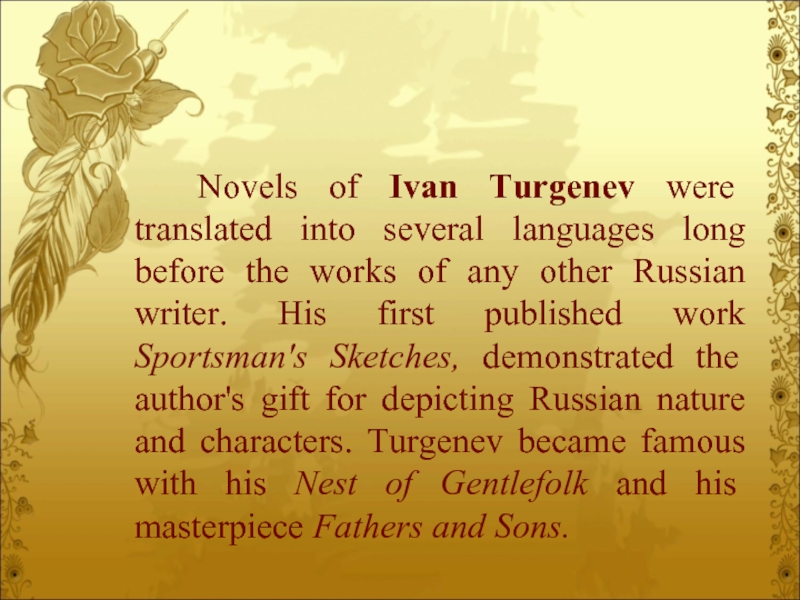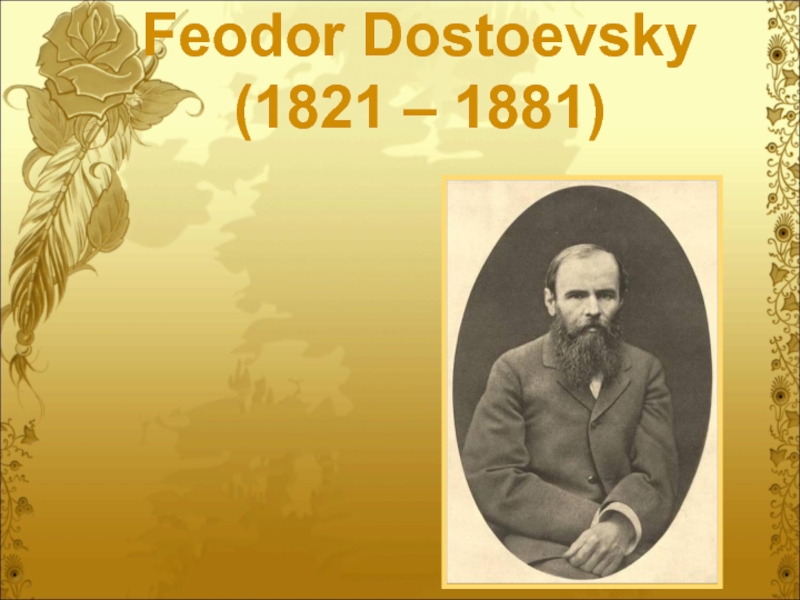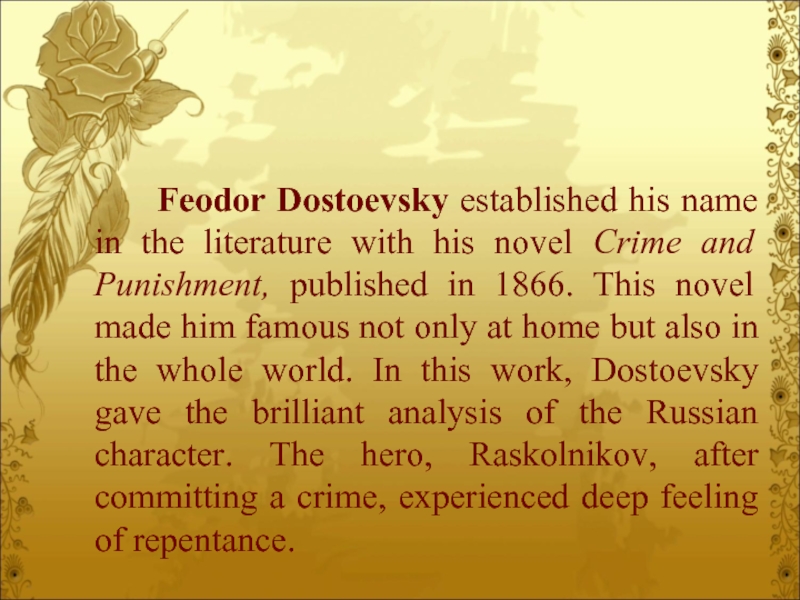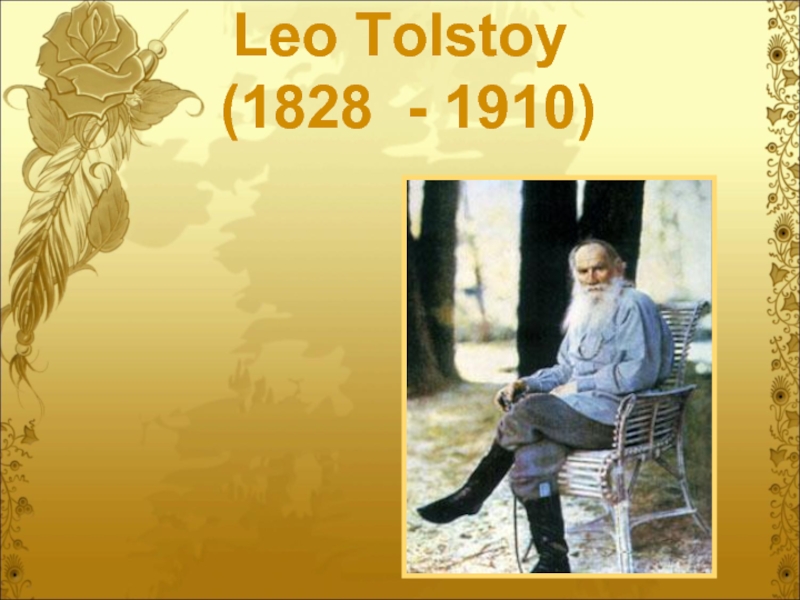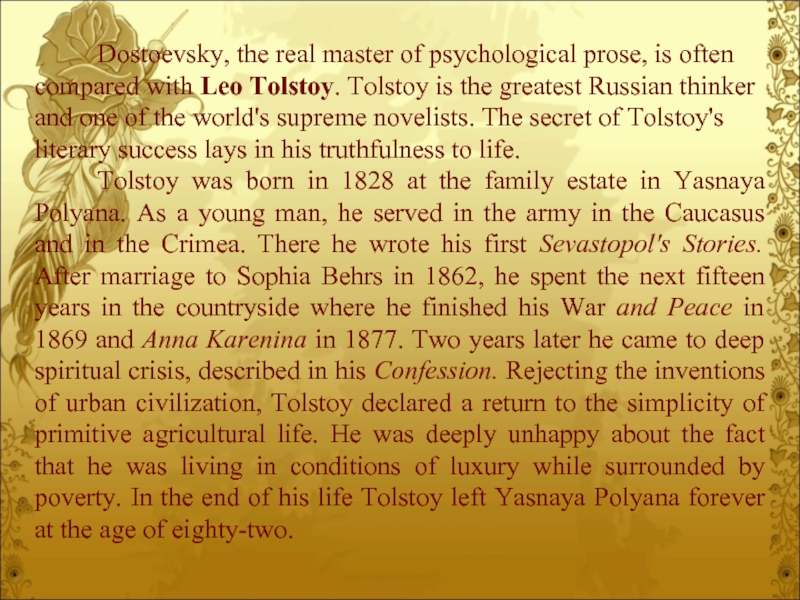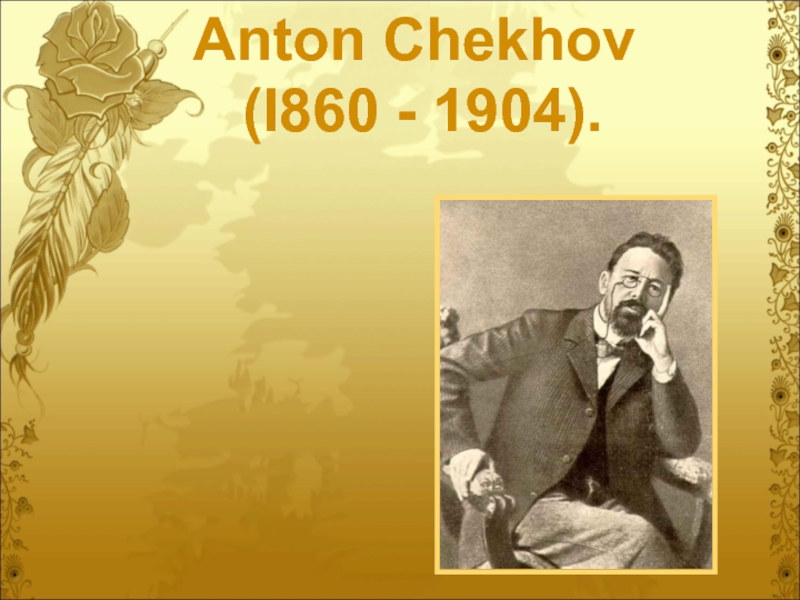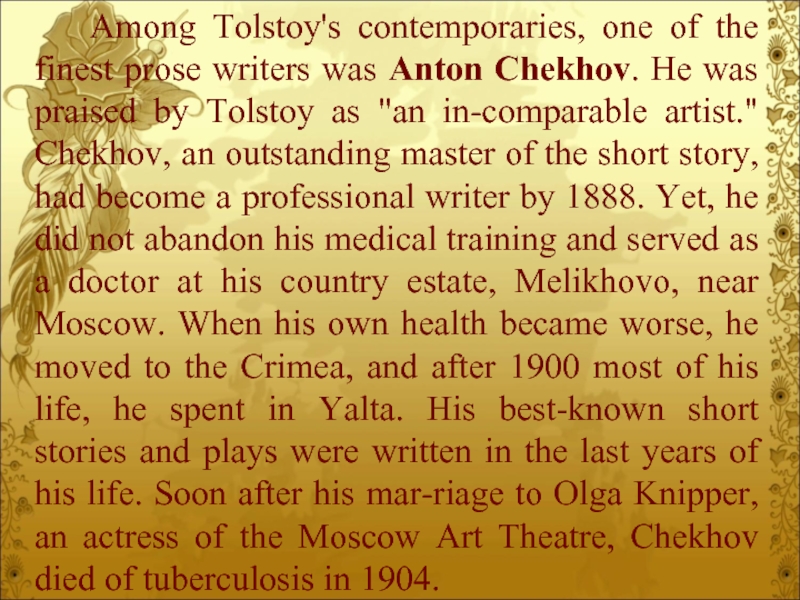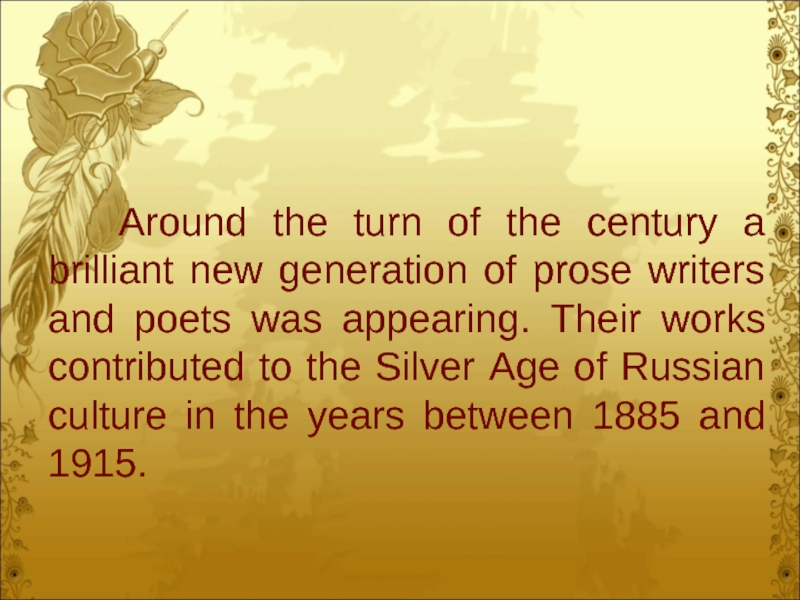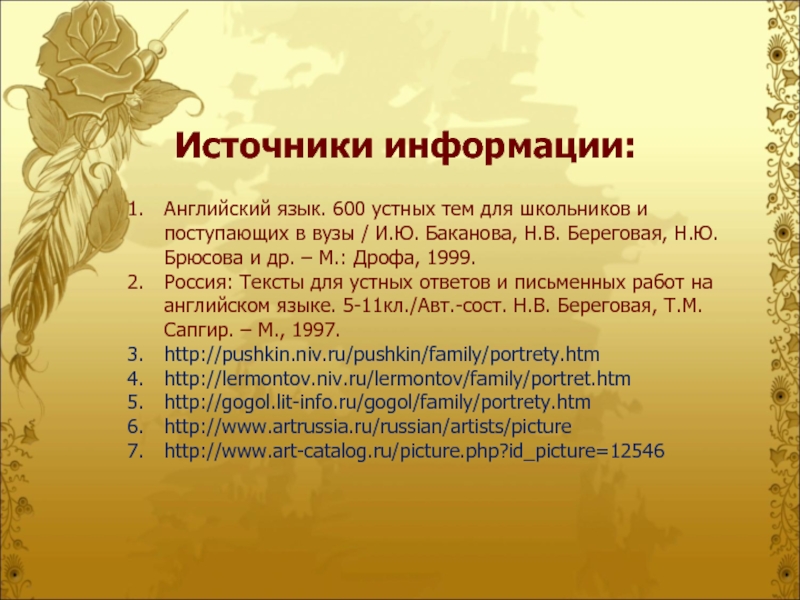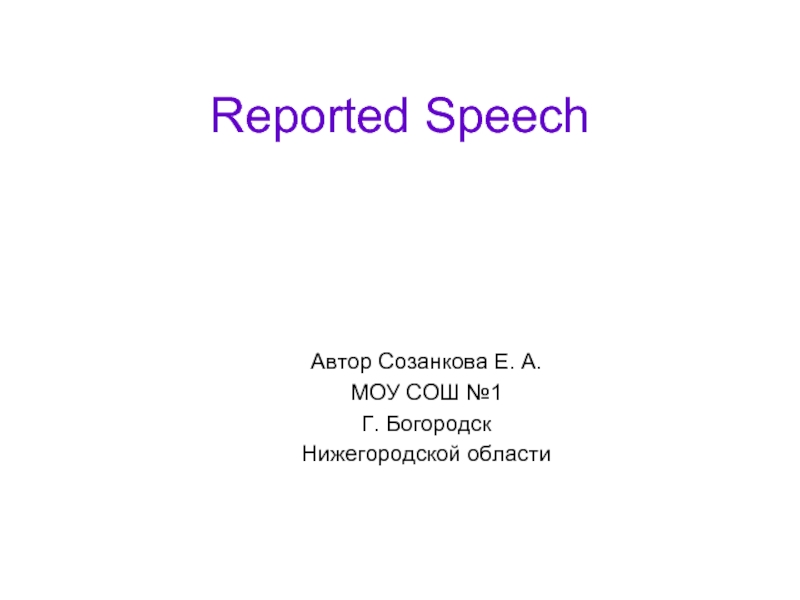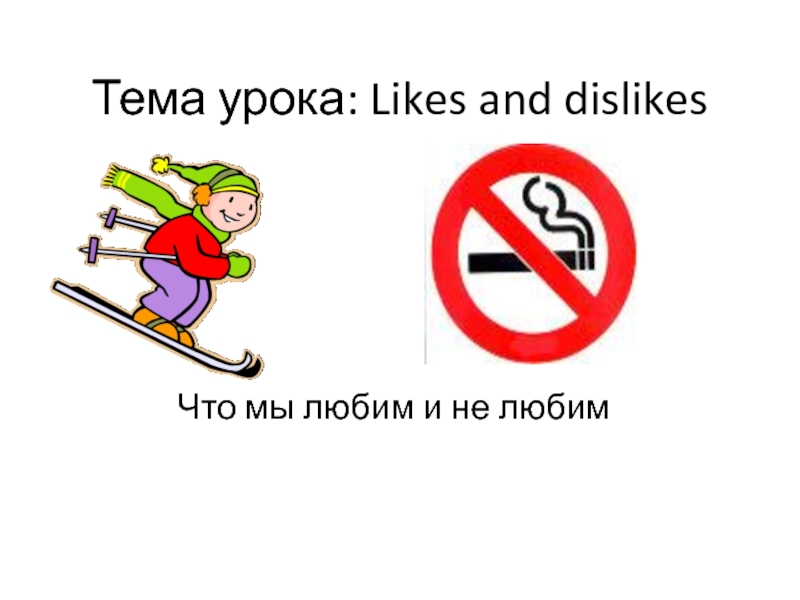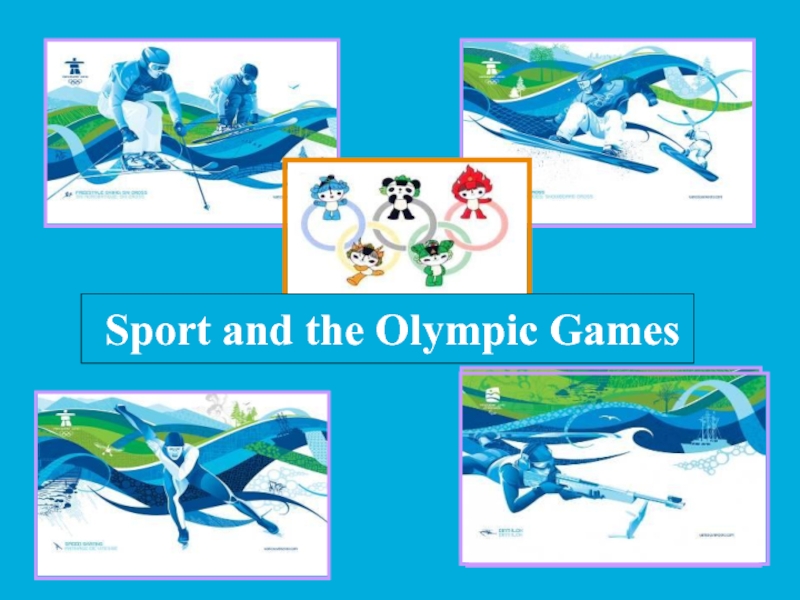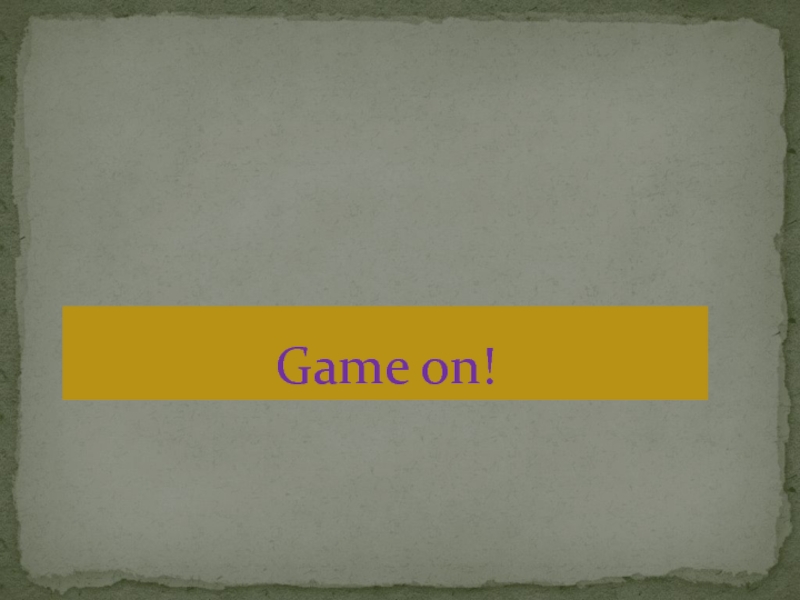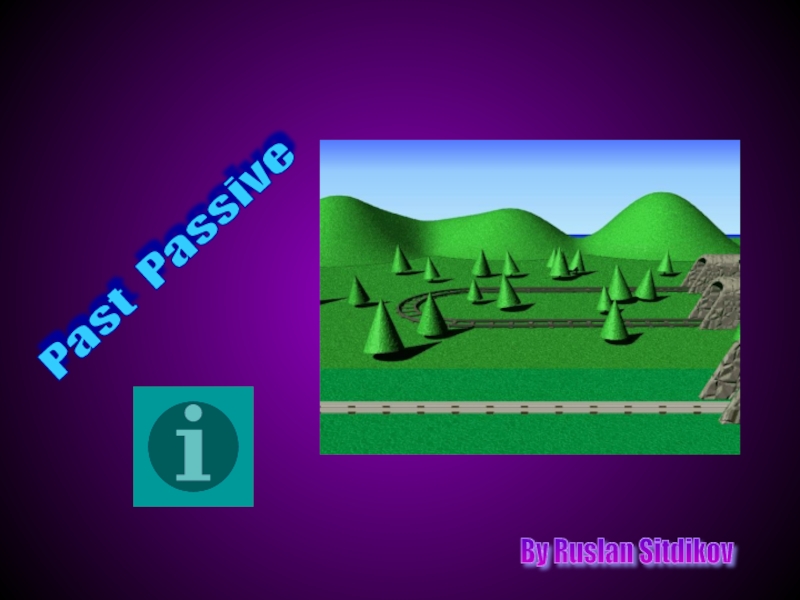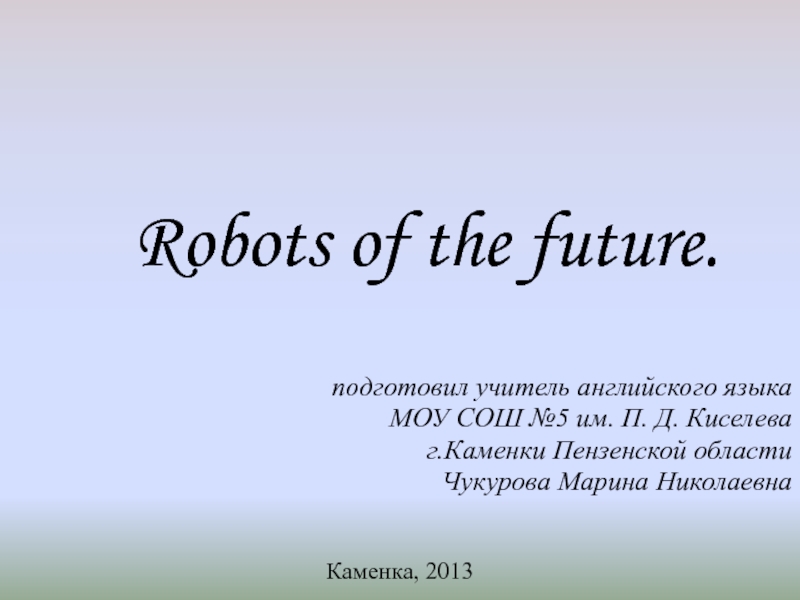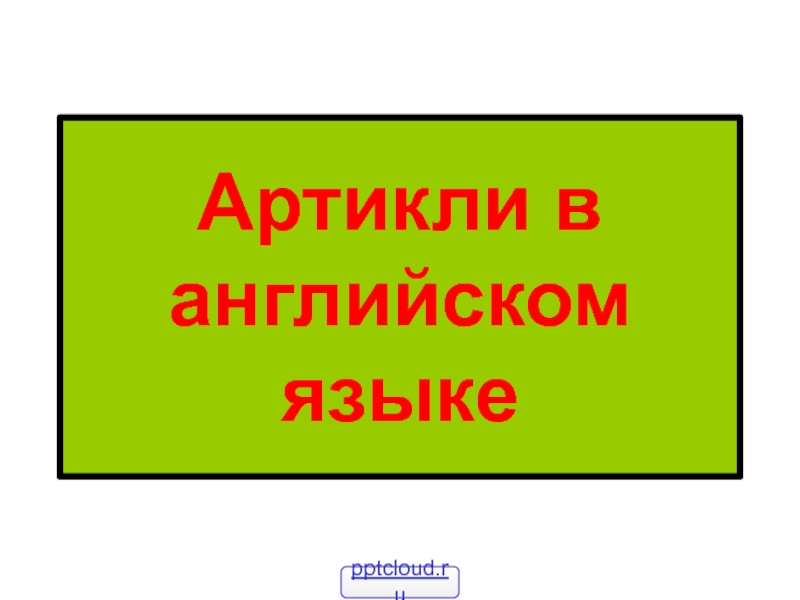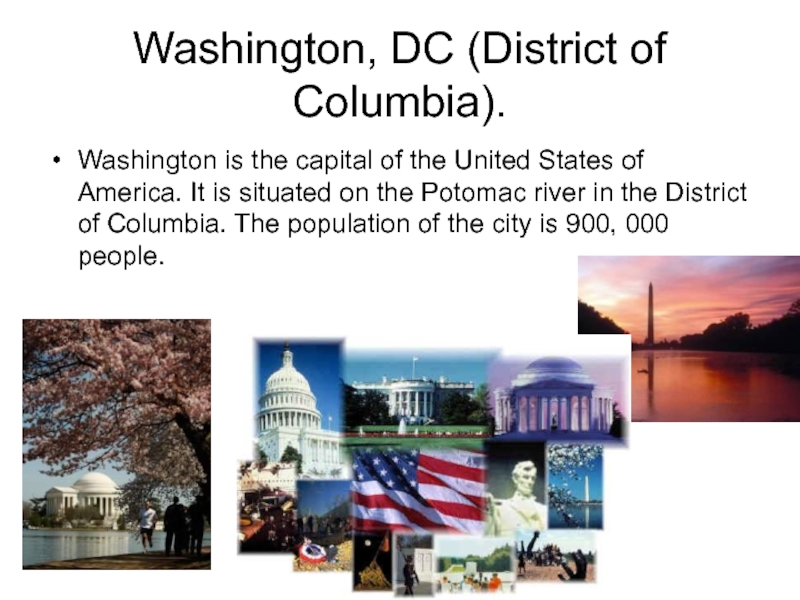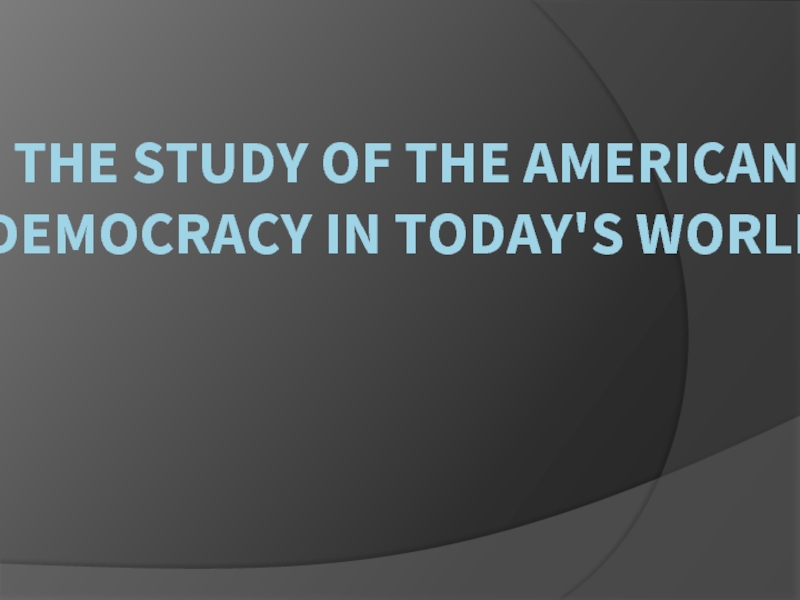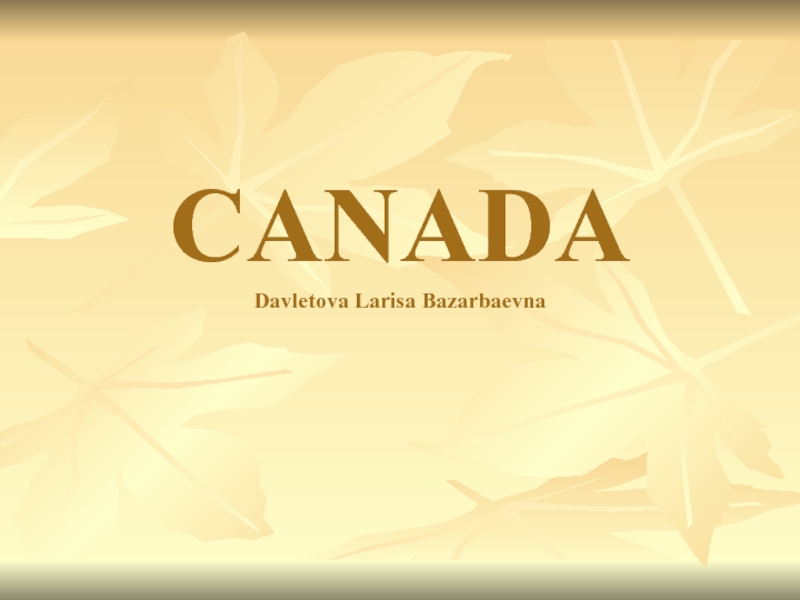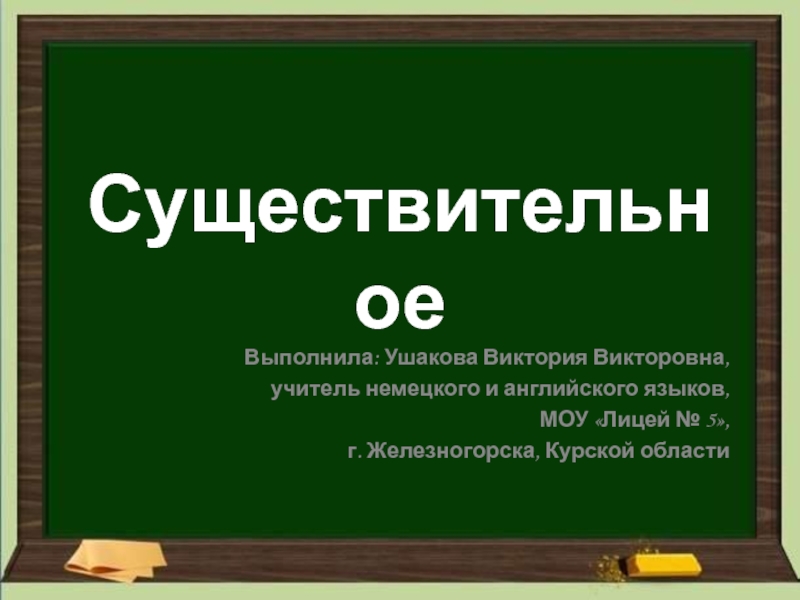Разделы презентаций
- Разное
- Английский язык
- Астрономия
- Алгебра
- Биология
- География
- Геометрия
- Детские презентации
- Информатика
- История
- Литература
- Математика
- Медицина
- Менеджмент
- Музыка
- МХК
- Немецкий язык
- ОБЖ
- Обществознание
- Окружающий мир
- Педагогика
- Русский язык
- Технология
- Физика
- Философия
- Химия
- Шаблоны, картинки для презентаций
- Экология
- Экономика
- Юриспруденция
The Golden Age
Содержание
- 1. The Golden Age
- 2. Alexander Pushkin (1799 - 1837)
- 3. Alexander Pushkin, the father of
- 4. Mikhail Lermontov (1814 - 1841)
- 5. A young hussar officer,
- 6. Nicholai Gogol (1809 - 1852).
- 7. The real master of the art of
- 8. Ivan Turgenev (1818 - 1883)
- 9. Novels of Ivan Turgenev were translated into
- 10. Feodor Dostoevsky (1821 – 1881)
- 11. Feodor Dostoevsky established his name in the
- 12. Leo Tolstoy (1828 - 1910)
- 13. Dostoevsky, the real master of psychological prose,
- 14. Anton Chekhov (I860 - 1904).
- 15. Among Tolstoy's contemporaries, one of the finest
- 16. Around the turn of the century a
- 17. Источники информации:Английский язык. 600 устных тем для
- 18. Скачать презентанцию
Alexander Pushkin (1799 - 1837)
Слайды и текст этой презентации
Слайд 5 A young hussar officer, Mikhail Lermontov, expressing
his wrath against the society and his sorrow about Pushkin's
death, wrote the verses The Death of the Poet. Lermontov was arrested for his apparent call for freedom and exiled to the Caucasus. In 1841, the rebellious poet was also killed in a duel. In Caucasus, he started writing his most celebrated work, A Hero of Our Time. So remarkable is his craftsmanship that Anton Chekhov recommended anyone to read the first chapter of this novel in order to learn how to write.Слайд 7The real master of the art of satire was Nicholai
Gogol. When he arrived to St. Petersburg Pushkin encouraged him
as a writer. Gogol is best known as the author of The Government Inspector and Dead Souls. He is famous for telling bitter truths about Russia's troubles.Слайд 9Novels of Ivan Turgenev were translated into several languages long
before the works of any other Russian writer. His first
published work Sportsman's Sketches, demonstrated the author's gift for depicting Russian nature and characters. Turgenev became famous with his Nest of Gentlefolk and his masterpiece Fathers and Sons.Слайд 11Feodor Dostoevsky established his name in the literature with his
novel Crime and Punishment, published in 1866. This novel made
him famous not only at home but also in the whole world. In this work, Dostoevsky gave the brilliant analysis of the Russian character. The hero, Raskolnikov, after committing a crime, experienced deep feeling of repentance.Слайд 13Dostoevsky, the real master of psychological prose, is often compared
with Leo Tolstoy. Tolstoy is the greatest Russian thinker and
one of the world's supreme novelists. The secret of Tolstoy's literary success lays in his truthfulness to life.Tolstoy was born in 1828 at the family estate in Yasnaya Polyana. As a young man, he served in the army in the Caucasus and in the Crimea. There he wrote his first Sevastopol's Stories. After marriage to Sophia Behrs in 1862, he spent the next fifteen years in the countryside where he finished his War and Peace in 1869 and Anna Karenina in 1877. Two years later he came to deep spiritual crisis, described in his Confession. Rejecting the inventions of urban civilization, Tolstoy declared a return to the simplicity of primitive agricultural life. He was deeply unhappy about the fact that he was living in conditions of luxury while surrounded by poverty. In the end of his life Tolstoy left Yasnaya Polyana forever at the age of eighty-two.
Слайд 15Among Tolstoy's contemporaries, one of the finest prose writers was
Anton Chekhov. He was praised by Tolstoy as "an incomparable
artist." Chekhov, an outstanding master of the short story, had become a professional writer by 1888. Yet, he did not abandon his medical training and served as a doctor at his country estate, Melikhovo, near Moscow. When his own health became worse, he moved to the Crimea, and after 1900 most of his life, he spent in Yalta. His best-known short stories and plays were written in the last years of his life. Soon after his marriage to Olga Knipper, an actress of the Moscow Art Theatre, Chekhov died of tuberculosis in 1904.Слайд 16Around the turn of the century a brilliant new generation
of prose writers and poets was appearing. Their works contributed
to the Silver Age of Russian culture in the years between 1885 and 1915.Слайд 17Источники информации:
Английский язык. 600 устных тем для школьников и поступающих
в вузы / И.Ю. Баканова, Н.В. Береговая, Н.Ю. Брюсова и
др. – М.: Дрофа, 1999.Россия: Тексты для устных ответов и письменных работ на английском языке. 5-11кл./Авт.-сост. Н.В. Береговая, Т.М. Сапгир. – М., 1997.
http://pushkin.niv.ru/pushkin/family/portrety.htm
http://lermontov.niv.ru/lermontov/family/portret.htm
http://gogol.lit-info.ru/gogol/family/portrety.htm
http://www.artrussia.ru/russian/artists/picture
http://www.art-catalog.ru/picture.php?id_picture=12546
Теги
